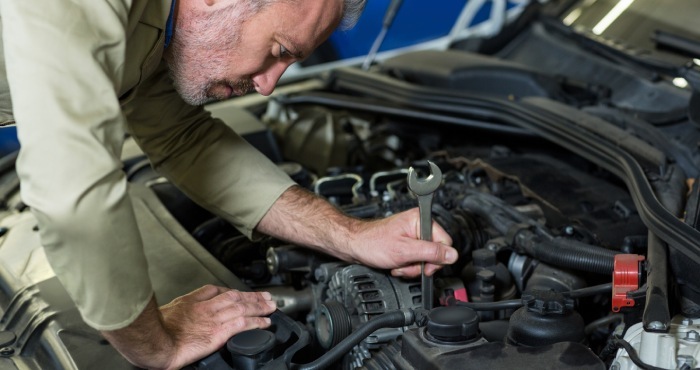Buying a new or pre-owned vehicle can be a thrilling experience, but it can quickly become disheartening if you encounter major issues shortly after leaving the dealership. If your vehicle suffers from persistent problems that compromise its safety, functionality, or resale value, California’s Lemon Law might provide a solution, allowing you to pursue either a replacement or a refund. A frequent question that arises in such scenarios is: What is the typical duration of the Lemon Law process?
The answer can be quite complex, as the timeframe for resolving a Lemon Law claim can differ based on various elements, such as the type of vehicle involved, the specifics of the defects, the manufacturer’s level of cooperation, and the legal procedures that need to be followed. In this article, we will outline the usual timeline associated with Lemon Law cases to help you understand what to anticipate if you find yourself needing to file a claim under California’s Lemon Law.
What Is California’s Lemon Law?
Before we explore the timeline, it’s important to grasp the scope of California’s Lemon Law and the role of California Lemon Law attorneys. This law serves as a safeguard for consumers who buy or lease new vehicles that encounter major defects impacting their usability, safety, or market value. These defects must emerge within a designated period or mileage—usually within the first 18 months or 18,000 miles, whichever comes first.
If a vehicle continues to malfunction after several attempts at repair, the manufacturer is legally obligated to offer a solution. With the help of a knowledgeable California Lemon Law lawyer, consumers may qualify for a refund, a replacement vehicle, or compensation for ineffective repairs. This law encompasses new cars, leased vehicles, and even used cars still covered by the manufacturer’s warranty, as long as the defects align with the specified criteria. An attorney can help safeguard your rights and ensure you receive the complete compensation you are entitled to.
Step-by-Step Lemon Law Process Timeline
Step 1: Identifying the Issue
The initial phase of the Lemon Law procedure entails recognizing that your vehicle has a persistent problem. This could be anything from a continuous engine malfunction to repeated brake issues, or any other factor that disrupts the car’s intended performance.
In California, for the Lemon Law to be applicable, the problem must be significant—meaning it should affect the car’s usability, safety, or overall worth. Minor aesthetic flaws or one-time incidents generally do not meet this criterion.
After you’ve identified the issue, it’s crucial to document it in detail. This means keeping track of:
- Description of the issue: Provide specific information about the defect, including the symptoms or malfunctions you’re experiencing.
- Repair log: Keep a record of all repair attempts, noting the date of each service and what actions were taken by the mechanic to resolve the problem.
Timeline: Immediate to a few weeks.
Step 2: Pursuing Repairs
Under California’s Lemon Law requires that the manufacturer or dealer is allowed a reasonable number of chances to fix the defect. This concept is commonly known as the “reasonable number of repair attempts” criterion. Generally, the following applies:
- If the vehicle has been out of operation for 30 days or longer due to repairs related to the same problem, it may qualify for protection under the Lemon Law.
- If the same defect has been addressed multiple times (typically two or three occasions), it may also be eligible for Lemon Law protections.
It is essential to confirm that the manufacturer or dealership has been given a fair opportunity to remedy the situation. Repairs must be conducted by an authorized service provider and should consistently target the same issue each time.
Timeline: This phase can last from a few weeks to several months, depending on how quickly the repairs are scheduled and completed.
Step 3: Informing the Manufacturer
If multiple repair attempts do not resolve the problem, or if the vehicle has been non-operational for a significant duration, the subsequent action is to inform the manufacturer of your intention to file a Lemon Law claim. This typically involves sending a formal written notification, which might be necessary before initiating any legal proceedings under the Lemon Law.
Many individuals choose to engage a Lemon Law attorney to help draft this notice and manage correspondence with the manufacturer. This step is crucial, as it acts as an official appeal for the manufacturer to offer a solution.
Timeline: 1 to 2 weeks.
Step 4: Negotiating a Resolution
Once the manufacturer receives your notice, they may try to resolve the issue by offering a replacement vehicle, a refund, or compensation for repairs. In some cases, manufacturers may try to offer a repair that will resolve the issue, and if that happens, it may bring an end to the process.
However, if the manufacturer does not offer a reasonable solution or continues to fail to repair the vehicle effectively, you may need to escalate the matter. This could involve filing a formal lawsuit or pursuing arbitration, depending on the specifics of your case.
Timeline: A few weeks to a few months.
Step 5: Arbitration (Optional)
In California, consumers have the option to resolve disputes through arbitration prior to pursuing legal action in court. This process is generally more expedient and cost-effective than undergoing a complete trial, and many manufacturers stipulate arbitration as part of their warranty terms.
During the arbitration process, an impartial third party evaluates the evidence presented to determine if the vehicle meets the legal definition of a lemon. If the arbitrator decides in your favor, the manufacturer is obligated to adhere to the ruling and implement the specified remedy.
While arbitration can be quicker than traditional litigation, it is not immediate. The duration can vary from a few weeks to several months, depending on how intricate the case is and how willing the manufacturer is to cooperate.
Timeline: 1 to 3 months.
Step 6: Filing a Lawsuit
If arbitration fails to address the problem or is not a required step, the subsequent action is to initiate a lawsuit in court. Although this can significantly prolong the process, it may be essential if you are unable to obtain an agreeable resolution from the manufacturer.
The lawsuit process includes the following stages:
- Filing the complaint: This document officially commences the lawsuit.
- Discovery phase: Both parties share relevant information regarding the case, which may include depositions, interrogatories, and requests for documents.
- Mediation and settlement negotiations: Typically, before proceeding to trial, most Lemon Law cases are resolved through mediation or negotiation.
- Trial: If a settlement cannot be reached, the case will advance to trial.
Timeline: A lawsuit can take anywhere from 6 months to 1 year or more, depending on the court’s schedule and the complexity of the case.
Factors That Influence the Lemon Law Process Timeline
The length of the Lemon Law process can vary due to several factors:
Response Time from Manufacturers:
Some manufacturers are quick to respond and willing to settle Lemon Law claims efficiently, which can significantly shorten the time needed to achieve a resolution. Conversely, manufacturers that are less cooperative may take longer to reply or may challenge the claim, prolonging the overall process.
Nature of the Defect:
The severity and complexity of the defect in the vehicle greatly influence how long the resolution will take. Minor issues, such as a defective sensor or small electrical problems, can typically be fixed swiftly. In contrast, more intricate defects related to the engine, transmission, or sporadic failures often necessitate extensive diagnostics and multiple repairs, resulting in a lengthier resolution period.
Legal Assistance:
Engaging a knowledgeable Lemon Law attorney can expedite the process and enhance its efficiency. An attorney is well-versed in managing delays, compiling necessary documentation, and negotiating effectively on behalf of their client. If the situation escalates to arbitration or requires court involvement, having legal representation becomes even more vital for navigating the timeline.
Dispute Characteristics:
If an agreement cannot be reached between the parties involved, the case may escalate to litigation, which typically extends the duration of the process. Factors like court schedules, legal motions, and hearings can add several months to the timeline. Generally, the more complicated or contentious the disagreement, the longer it takes to reach a resolution.
The duration of a Lemon Law case can differ significantly, typically spanning from several months to more than a year, based on the details involved. If the matter is settled swiftly through methods like repairs, arbitration, or direct negotiations, it could potentially be resolved in just a few weeks to a few months. Conversely, if a lawsuit or extended negotiations are required, the timeline may stretch well past one year.
Although this process can be lengthy, it is crucial to keep in mind that California’s Lemon Law aims to safeguard consumers from being burdened with faulty vehicles. If your car meets the criteria of a lemon, you might have the right to a refund, replacement, or monetary compensation. Partnering with an experienced San Diego Lemon Law attorney can greatly enhance your experience, providing guidance throughout the process, managing intricate legal issues, and ensuring that your consumer rights are upheld at every stage.







